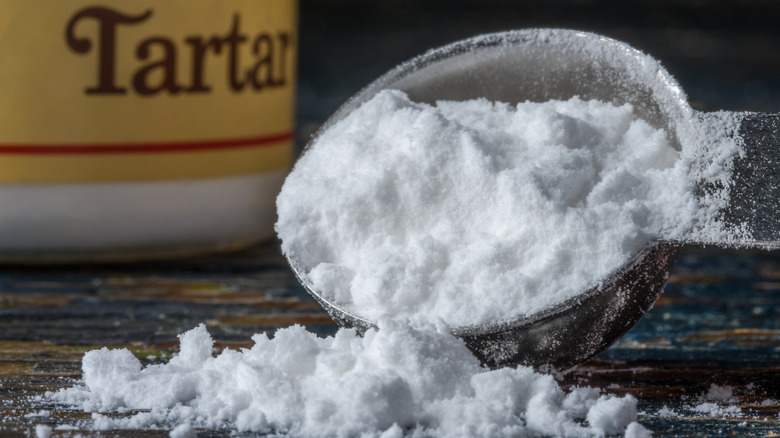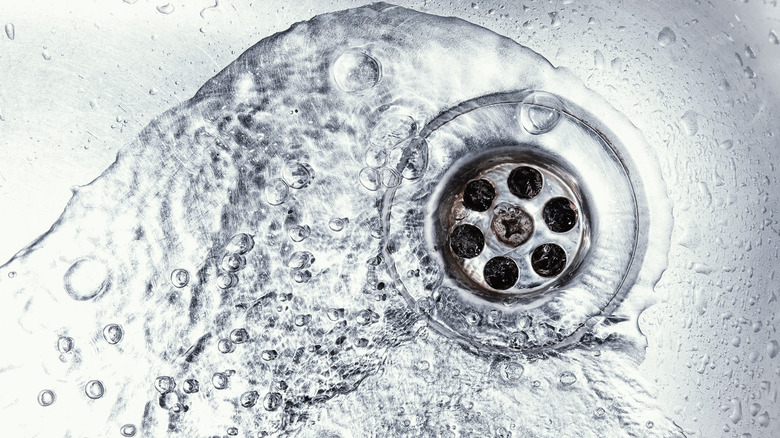The Unexpected Way Cream Of Tartar Was Used In Victorian Times
Cream of tartar is one of those pantry staples we all have, but do we really know what it is or why we need it? Remember that time you made lemon meringue pie? Oh yeah. That's right. A half teaspoon or so added to the egg whites makes a better meringue. Does anything else come to mind? If you're like most of us, probably not. On that note, it's probably a good idea to check the expiration on that container of cream of tartar tucked way back in a corner of your spice cabinet.
First things first: What the heck is cream of tartar, anyway? According to Food Network, cream of tartar is derived from tartaric acid, a naturally-occurring substance produced by grapes during the winemaking process. Woodland Foods offers a more detailed explanation, noting the acid forms crystals inside wine casks during fermentation. Producing cream of tartar involves scraping the crystals from the cask walls and combining them with potassium hydroxide (via Food Network).
According to Woodland Foods, the history of cream of tartar goes back 7,000 years to a village in what is now northern Iran. But it's only been a cooking staple for about 250 years when French cooks began adding it to meringue (via HuffPost). And sometime between then and now, right around the Victorian era, it earned a reputation as a decent cleaning agent. We bet that's a twist you didn't see coming.
The environmentally-friendly choice
We can't help but paraphrase a line from advertising: "But wait! There's more. Not only does cream of tartar make meringue better, it cleans your sink, too!"
According to Chemistry World, Victorian-era homemakers often relied on cream of tartar as a cleaning agent. Mixed with water, it did a decent job on bathroom surfaces. Combined with lemon juice or white vinegar, it could be used to polish cutlery. More than a century later, there's been a resurgence in the use of cream of tartar as a cleaning product. Environmentally-conscious cleaners are increasingly choosing natural cleaners over chemically-based alternatives, with cream of tartar is getting rave reviews. The Kitchn advises using a damp cloth sprinkled with cream of tartar to clean stainless steel surfaces and suggests combining it with hydrogen peroxide to remove stains from aluminum pans. The same mixture is also good for removing rust from appliances like can openers.
Hello Nest swears by using a blend of cream of tartar and either lemon juice or white vinegar to make copper sparkle and advises sprinkling cream of tartar at entry points to deter ants. Stockpiling Moms makes a paste of lemon juice and cream of tartar to remove ink stains and suggests combining glycerin and cream of tartar in a spray bottle to make homemade laundry stain remover.
At the end of the day, cream of tartar is fun, too. HuffPost reminds us it's a key ingredient in homemade playdough.

